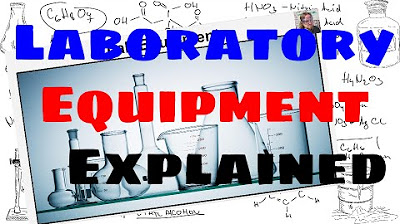APES Video Notes 1.4 - Carbon Cycle
Summary
TLDRIn this educational video, Mr. Smeeds explores the carbon cycle, focusing on the movement of carbon through Earth's systems. He discusses carbon sinks, sources, and reservoirs, emphasizing the processes that shift carbon compounds. The video highlights how human activities, particularly fossil fuel combustion, disrupt the balance by releasing carbon dioxide into the atmosphere faster than natural processes can absorb it, contributing to climate change. Key concepts include the quick combustion of fuels versus the slow sedimentation and burial that forms fossil fuels, and the role of photosynthesis and respiration in the carbon cycle.
Takeaways
- 🌏 The carbon cycle involves the movement of carbon-containing molecules like carbon dioxide, glucose, and methane between Earth's systems.
- 🔄 Carbon sinks are reservoirs that store more carbon than they release, helping to mitigate climate change, while carbon sources release more carbon than they store, contributing to atmospheric CO2 levels.
- 🌿 Photosynthesis and cellular respiration are short-term processes that quickly balance each other out, with plants removing CO2 from the atmosphere and animals releasing it back.
- 🔥 The combustion of fossil fuels is a quick process that releases large amounts of CO2 into the atmosphere, leading to an imbalance in carbon reservoirs.
- 🌊 The ocean is a significant carbon reservoir, with processes like direct exchange, photosynthesis by marine organisms, and sedimentation playing key roles in carbon storage.
- 🌱 Plants and algae act as carbon sinks by taking in CO2 through photosynthesis and storing it in the form of glucose or other organic compounds.
- 🐄 Animal agriculture is a carbon source due to the methane emissions from livestock, contributing to climate change.
- 🌳 Deforestation releases stored carbon back into the atmosphere and reduces the capacity of forests to act as carbon sinks.
- 🚜 The extraction and combustion of fossil fuels are anthropogenic activities that have dramatically altered the carbon cycle over the past 250 years, increasing atmospheric CO2 levels.
- ⏳ The geological processes of sedimentation and burial, which form fossil fuels, are slow and long-term, contrasting with the rapid extraction and combustion by humans.
Q & A
What is the main focus of the video on the carbon cycle?
-The video focuses on how carbon cycles through Earth's systems, specifically looking at the sinks, sources, and reservoirs of carbon, and the processes that move carbon compounds between them.
What are the objectives for the day in the video?
-The objectives are to explain the steps and reservoir interactions in the carbon cycle, including the movement of carbon molecules between sources and sinks, the distinction between long-term and short-term reservoirs, and the cycling of carbon between photosynthesis and respiration.
How does the combustion of fossil fuels affect the carbon cycle?
-The combustion of fossil fuels releases carbon dioxide into the atmosphere much faster than it is removed through sedimentation and burial, leading to an imbalance in carbon reservoirs and an increase in atmospheric carbon dioxide.
What is a carbon sink?
-A carbon sink is a reservoir that stores more carbon than it releases, effectively taking carbon out of the atmosphere and helping to mitigate or reduce the effects of climate change.
What are some examples of carbon sinks mentioned in the video?
-Examples of carbon sinks include algae in the ocean, sediments at the bottom of the ocean, plants on land, and soil, which store carbon through processes like photosynthesis and decomposition.
What is a carbon source?
-A carbon source is a process that releases more carbon than it stores, thereby increasing the concentration of carbon dioxide in the atmosphere.
What are some examples of carbon sources discussed in the video?
-Examples of carbon sources include fossil fuel combustion, animal agriculture, and deforestation, all of which release carbon dioxide into the atmosphere.
How does photosynthesis contribute to the carbon cycle?
-Photosynthesis is a process carried out by plants, algae, and phytoplankton where they remove carbon dioxide from the atmosphere and convert it into glucose, acting as a carbon sink.
What is cellular respiration and how does it relate to the carbon cycle?
-Cellular respiration is a process where organisms use oxygen to break down glucose, releasing energy and carbon dioxide. It is considered a carbon source because it releases carbon dioxide into the atmosphere.
How does the direct exchange of carbon dioxide between the ocean and the atmosphere affect the carbon cycle?
-Direct exchange allows carbon dioxide to move quickly between the ocean and the atmosphere, potentially leading to an increase in oceanic carbon dioxide levels and contributing to ocean acidification.
What is the significance of the burial process in the carbon cycle?
-Burial is a slow geological process that involves the compression of organic matter into sedimentary rock or fossil fuels, acting as a long-term carbon reservoir.
How does the extraction and combustion of fossil fuels impact the carbon cycle?
-The extraction and combustion of fossil fuels release carbon dioxide into the atmosphere much faster than it is naturally sequestered, leading to an imbalance and an increase in atmospheric carbon dioxide.
Outlines

هذا القسم متوفر فقط للمشتركين. يرجى الترقية للوصول إلى هذه الميزة.
قم بالترقية الآنMindmap

هذا القسم متوفر فقط للمشتركين. يرجى الترقية للوصول إلى هذه الميزة.
قم بالترقية الآنKeywords

هذا القسم متوفر فقط للمشتركين. يرجى الترقية للوصول إلى هذه الميزة.
قم بالترقية الآنHighlights

هذا القسم متوفر فقط للمشتركين. يرجى الترقية للوصول إلى هذه الميزة.
قم بالترقية الآنTranscripts

هذا القسم متوفر فقط للمشتركين. يرجى الترقية للوصول إلى هذه الميزة.
قم بالترقية الآنتصفح المزيد من مقاطع الفيديو ذات الصلة

The Four States of Matter - Explained

Lab Equipment - Explained

3. Gr 11 Life Sciences - Population Ecology - Theory 3 Mark Recapture Method

4. Gr 11 Life Sciences - Population Ecology - Worksheet 1

PENJASKES KELAS X - SOFTBALL

Introduction to Culture [AP Human Geography Review Unit 3 Topic 1]

Menentukan Mr ( massa molekul relatif )
5.0 / 5 (0 votes)
